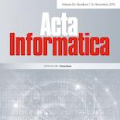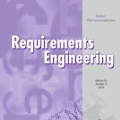Preclinical patient care is both mentally and physically challenging and exhausting for emergency teams. The teams intensively use medical technology to help the patient on site. However, they must carry and handle multiple heavy medical devices such as a monitor for the patient's vital signs, a ventilator to support an unconscious patient, and a resuscitation device. In an industry project, we aim at developing a combined device that lowers the emergency teams' mental and physical load caused by multiple screens, devices, and their high weight. The focus of this paper is to describe our ideation and requirements elicitation process regarding the user interface design of the combined device. For one year, we applied a fully digital customized version of the Applied Cognitive Task Analysis (ACTA) method to systematically elicit the requirements. Domain and requirements engineering experts created a detailed hierarchical task diagram of an extensive emergency scenario, conducted eleven interviews with subject matter experts (SMEs), and executed two design workshops, which led to 34 sketches and three mockups of the combined device's user interface. Cross-functional teams accompanied the entire process and brought together expertise in preclinical patient care, requirements engineering, and medical product development. We report on the lessons learned for each of the four consecutive stages of our customized ACTA process.
翻译:临床病人护理在精神和生理上都具有挑战性,对急救小组来说是累赘的。小组密集地使用医疗技术帮助现场的病人。但是,他们必须携带和处理多重重医疗装置,如病人生命迹象的监视器、支持昏迷病人的呼吸器和复苏器。在一个行业项目中,我们的目标是开发一个综合装置,降低急救小组因多屏幕、装置和高重量造成的精神和体力负荷。本文件的重点是描述我们关于综合装置用户界面设计的想法和要求引出过程。一年来,我们应用了一个完全数字化的定制化的应用功能性任务分析(ACTA)方法来系统了解需求。Domain和要求工程专家制作了一个详尽的关于广泛紧急情况情景的等级任务图,与主题专家进行了11次访谈,并举办了两个设计讲习班,导致综合装置用户界面的34个草图和3个模型。跨功能小组配合整个过程,并汇集了临床前病人护理、要求工程和医疗产品定制发展过程中的专门知识。我们连续四个阶段都报告了ACTA进程的经验教训。




